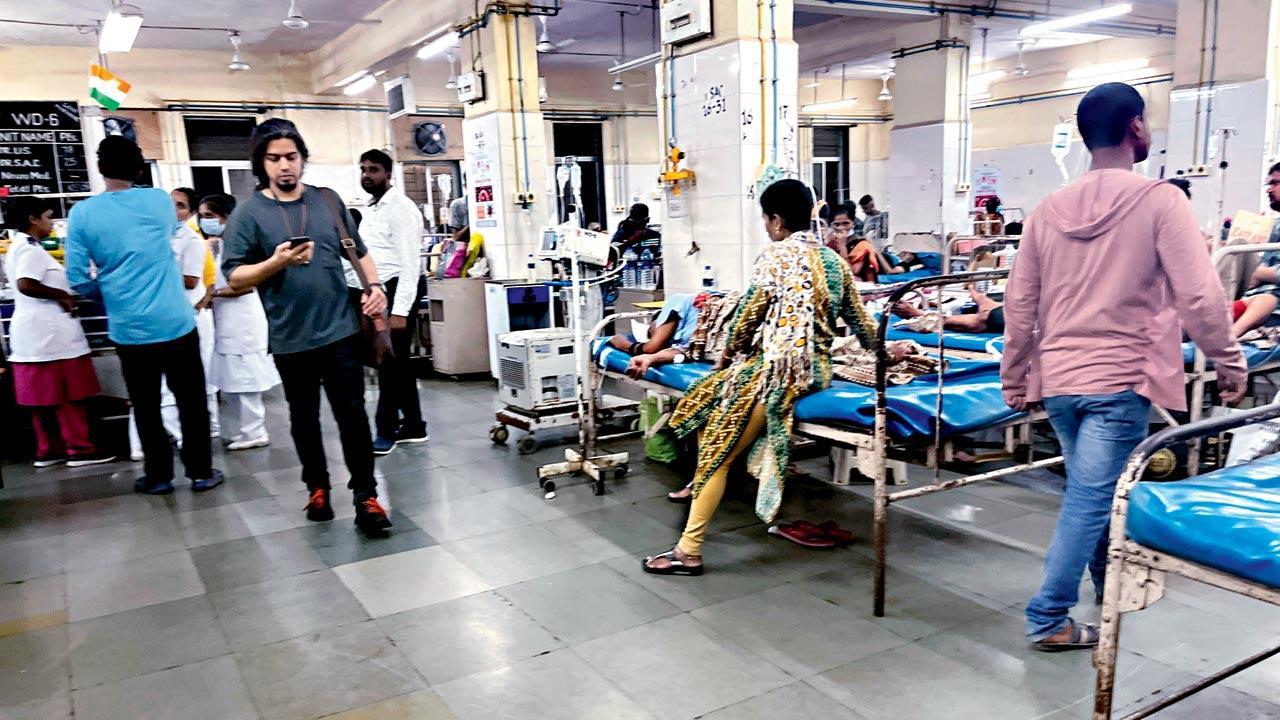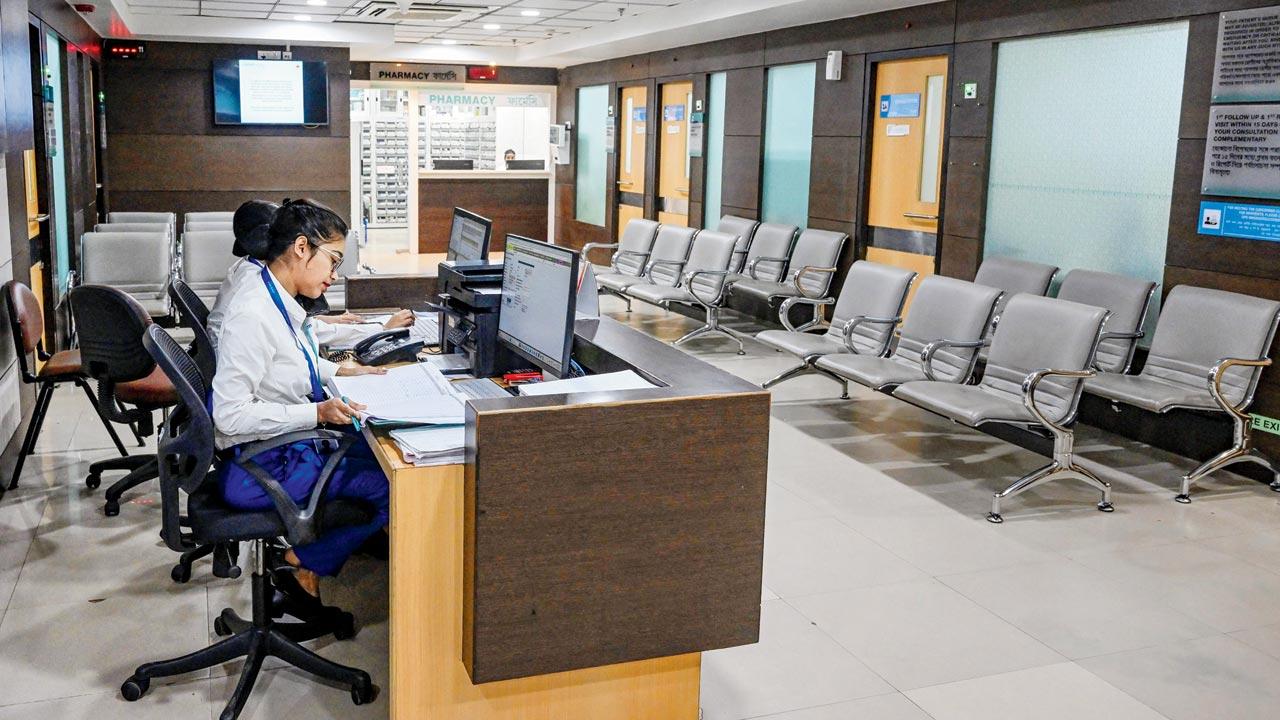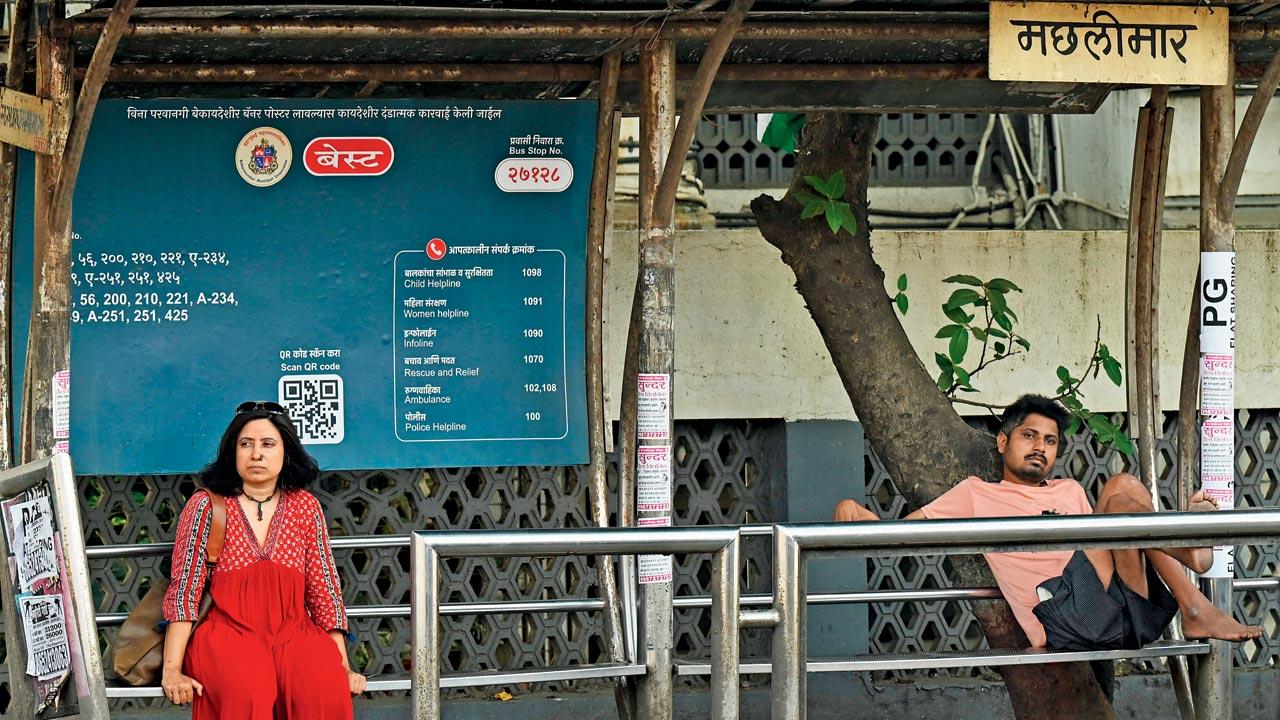Shocking absence of safety in Mumbai’s civic hospitals has been made worse by indiscriminate posting of contractual staff around vulnerable patients and exhausted doctors

Mid-day writer Anand Singh (in grey t-shirt) walked into Sion Hospital at 8.30 pm on August 15 to test how easily he could roam the premises without being questioned. He provided a fictitious doctor’s name when he was asked who he wanted to see and was given full access to all departments. Both, inside the general and women’s wards, there were no checks. Pic/Atul Kamble
Fury and fear were in the air as resident doctors marched at Azad Maidan on Friday in support of their fallen colleague, who was raped and murdered 1,887.5 km away at Kolkata’s RG Kar Medical College and Hospital on August 9. The anger over something like this happening to one of their own, was mixed in with the terrifying thought “it could have happened to any of them”.
Fury and fear were in the air as resident doctors marched at Azad Maidan on Friday in support of their fallen colleague, who was raped and murdered 1,887.5 km away at Kolkata’s RG Kar Medical College and Hospital on August 9. The anger over something like this happening to one of their own, was mixed in with the terrifying thought “it could have happened to any of them”.
That this happened in their workplace—a place of healing—and the fact that the suspected perpetrator was a familiar face in the hospital has sent shockwaves across the medical fraternity, all the way from Kolkata to Mumbai.
The Kolkata Police arrested Sanjoy Roy, 33, a civic volunteer reported to have an all-access pass at civic hospitals in the West Bengal capital. As a contractual worker, he was a known face among the local police and hospital staff, but may not have undergone the same vetting process and training and sensitisation as a full-time cop or healthcare worker. It was only during investigation of the doctor’s murder that it emerged Roy had allegedly displayed a pattern of abusive behaviour towards women.
 Doctors protesting at Azad Maidan on Friday. Pics/Atul Kamble
Doctors protesting at Azad Maidan on Friday. Pics/Atul Kamble
In Mumbai’s perpetually short-staffed hospitals as well, there are a growing number of contractual workers brought in to fill the gap in manpower. Hired under the Multipurpose Labour (MTL) scheme for a fraction of the cost of full-time employees, these contractual workers fulfil crucial roles of ward boys, semi-trained technicians, among others. But with no way to know if they have gone through appropriate background checks, the fear remains that a Kolkata-like incident may occur here too. There are currently 3,000 contractual workers across hospitals in the city.
Multiple nurses and doctors in the city have already reported incidents of being filmed surreptitiously in changing rooms and bathrooms, says Prakash Devdas, president of the Municipal Health Service Employees Association as well as Mahapalika Arogya Seva Karmachari Sanghatana. A labour lawyer of 30 years, the man probably knows most nurses, doctors, and community health workers in Mumbai.
Devdas meets us in his Bandra office before heading out for a court hearing on a nurse facing unlawful termination by a civic hospital. He is of the opinion that tragic as the Kolkata rape case is, the scenario in Mumbai is not much better. “Currently, the safety and security of healthcare workers, be it nurses, doctors or even miscellaneous staff, is held together by a few vigilant staff members in each of these civic hospitals,” he says.
 Outpatient Department (OPD) at a hospital in Kolkata holds a desolate look on August 17, 2024. Medical professionals around India took part in protests relating to the rape and murder of a doctor. The striking doctors have only grown in number affecting services across the country, but essential or life saving medical help is still provided. Pic/Getty Images
Outpatient Department (OPD) at a hospital in Kolkata holds a desolate look on August 17, 2024. Medical professionals around India took part in protests relating to the rape and murder of a doctor. The striking doctors have only grown in number affecting services across the country, but essential or life saving medical help is still provided. Pic/Getty Images
These are hospitals where women employees are already working in unhygienic and unsafe conditions. At many facilities, doctors and nurses don’t have easy access to women’s restrooms on all floors and when they do, the loos are often unhygienic. At some hospitals, there are no separate resting rooms for women doctors on night duty.
In the midst of all this, overworked doctors now have to watch out for yet another threat—temp workers with no regard for hospital rules or the law. “A few months ago, a phone was secretly placed in the doctor’s changing area in a civic hospital in Kandivli, with video recording on. The incident came to light when an MTL worker tried to sneak back in and take his phone. Doctors who were there at the time realised that the phone had been kept there with the camera lens facing outward. They complained to the dean, but nothing happened,” says Devdas.
At the same hospital, a nurse reveals that it is rare for her to find a free moment in which she can rest, when the chance comes she naps at her desk, which is the only safe space to let her guard down. “I just put my head down and take my nap there. I cannot leave the desk, both because there is too much work, but also because you can’t sleep without someone else keeping guard in the room. You cannot go off alone to nap,” she says.
 Neha Singh from the “Why Loiter?” campaing has been fighting for women to have agency over public spaces
Neha Singh from the “Why Loiter?” campaing has been fighting for women to have agency over public spaces
The risk of violent outbursts or crime at hospitals increases with temp workers because they have less to lose, says Devdas. “Permanent staff have a lot to lose. None of them would risk their job over something like this. But the MTL workers are free agents. They are not verified by the police and often are just hired for short durations. They go in and out, and are impossible to monitor. Some of them work at one spot for just a month before moving on to greener pastures with more pay. They also have something called an MTL card that gives them this easy access to various facilities,” he adds.
Our experience of walking around undetected at Sion Hospital (See ‘We walk into a civic hospital unchecked, no questions asked’) didn’t seem to surprise Devdas. “A few months ago, nurses at Sion Hospital had complained after a man was found taking photographs and videos of them in the changing room. In another hospital, a camera was kept in the women’s toilet, so the women couldn’t even relieve themselves in peace,” he says, adding that many of these incidents can be traced back to security lapses that result from hiring temp workers in such large volumes, making verification close to impossible.
In 2019, Sion Hospital saw a case where a critical patient’s sister was taken to the roof and raped by someone posing as a ward boy.
 Prakash Devdas is a lawyer who has been fighting to improve the conditions of health workers for over three decades. Pic/Kirti Surve Parade
Prakash Devdas is a lawyer who has been fighting to improve the conditions of health workers for over three decades. Pic/Kirti Surve Parade
Even 50 years later, the brutal rape and assault of nurse Aruna Shanbaug by a ward boy in KEM Hospital in 1973, has not faded from Mumbaikars’ memory. So vicious was the attack, that she was left in a vegetative state for 42 years, resulting in the one of the longest medico-legal cases for euthanasia in the country. In 2015, she died of pneumonia in her hospital bed. By then, her assailant Sohanlal Walmiki—who was merely charged with robbery—had already walked free after a seven-year prison term.
“The state is not hiring skilled labour. Contract labour is cheaper, but they have no unions or ways to address issues like workplace safety. So, a job with these conditions will attract a certain kind of crowd,” says Devdas, pointing out that the starting salary for a nurse is '5 lakh per annum, along with amenities like health discount and overtime. Contractual help, on the other hand, are paid '8,000 to '9,000 per month.
With the authorities dragging their feet on recruitment of permanent staff due to red tape and a lack of funds, hospitals across the state have begun to hire on contractual basis, explains Dr Pratik Debaje, president of the Maharashtra State Association of Residential Doctors (Central-MARD). “It is a fact that the state has not shown any interest to fill up vacancies across the board, be it doctors, nurses or class IV employees. This is why we are seeing a lot of contractual workers being hired. Instead that money should be used to recruit more payroll employees,” he says.
MTL staffers are leased out to hospitals by private companies, says Debaje, adding that he is unsure what qualifications the temp workers hold. “We tend to rely more on the class IV employees who are on the state’s payroll, because they know the system and undergo training when they join,” he adds.
Sion Hospital Dean Dr Mohan Joshi says that hiring MTL workers is a common practice, and is prevalent in corporate hospitals too. “There is nothing wrong with the practice in itself. We also make sure that all the MTL workers undergo police verification, whether they are hired via a private company or an NGO. Verification is a must for us,” he says, adding that there are 414 MTL working in Sion Hospital alone.
Many resident doctors, both men and women, who want to change things are now out protesting on the streets of Mumbai. One such doctor tells mid-day that even male doctors are worried about the safety of their women colleagues on night duty because of how easy it is for anyone to walk into a hospital and go wherever they like. “My colleagues and I are in our third year of residency, and we spend all day together. Can you imagine what it feels like to fear that something like this can happen to them?” he says.
Inputs by Eshan Kalyanikar
3,000
No. of contract staff hired across city’s govt-run hospitals
40% more women work at night now
As more women enter the night workforce, ensuring their safety is the need of the hour
The discourse around safety has grown all the more important as women enter the night workforce in greater numbers across industries.
This year alone, till July, the Gujarat government received 79 applications from top corporates to allow to women to work at night. In March, Amazon and Zomato started hiring women for night shifts. In 2019, Bharat Petroleum hired 11 women engineers as night shift managers—a first for the industry. The company changed statutory norms and brought about operational reforms to ensure the safety of the women officers. Closer home, in 2015, Chief Minister Devendra Fadnavis had famously amended the Factories Act to let women work in night shifts. In Goa, too, a power plant fought for permission for women to work late night.
With a wave of industrial and safety reforms, 40 per cent more women work at night now.
The need of the hour is to frame regulations to ensure the safety of these women at such late hours, both at work and during their commute to and from the workplace.
Meanwhile, amid the furore over the Kolkata rape-murder, some netizens have also gone on to question why the doctor was not more careful about the place she had chosen to rest (the hospital seminar hall) during her night duty. Activists have countered that women should be free and safe to rest wherever they wish, whether it’s at their workplace or in a park.
Neha Singh, an activist and an author based in Versova, says conversations like this led to her starting the “Why Loiter?” campaign, which aims to reclaim public spaces in the city for women and challenge patriarchal societal norms.
“In 2014, a woman was raped when she fell asleep in her Uber in Delhi, after meeting up with her friends. The conversation is not about why women have to be so hyper vigilant and even how catching a nap anywhere becomes a responsibility of the women and not a policing issue,” she says.
Sister Gracy Quadros (retired) has been working with Prakash Devdas, president of the Municipal Health Service Employees Association, to ensure the rights of nurses in the city for more than 30 years. She recalls her years working in a BMC hospital, “When a nurse wanted to sleep for a bit during her break, we would tell her to sleep on the stretchers or a vacant space in the ward itself. We didn’t let them go to the designated resting room, because there was no one who could watch who was going in and out of that room. We were so hypervigilant that if a nurse had not been seen for more than two hours, someone would go out searching for her. The only security we had was each other.”
We ask Singh about the dichotomy between wanting women to join and expand the workforce, and the resistance to providing a conducive work environment. “Exactly. They want more people in the workplace but also refuse to build infrastructure to support it. Or they gripe that hiring more women for night shifts entails more expenditure on security, whilst completely ignoring the higher pay-off. Studies have shown that women are better managers, making the workplace more productive and stress-free,” she says.
 Subscribe today by clicking the link and stay updated with the latest news!" Click here!
Subscribe today by clicking the link and stay updated with the latest news!" Click here!










